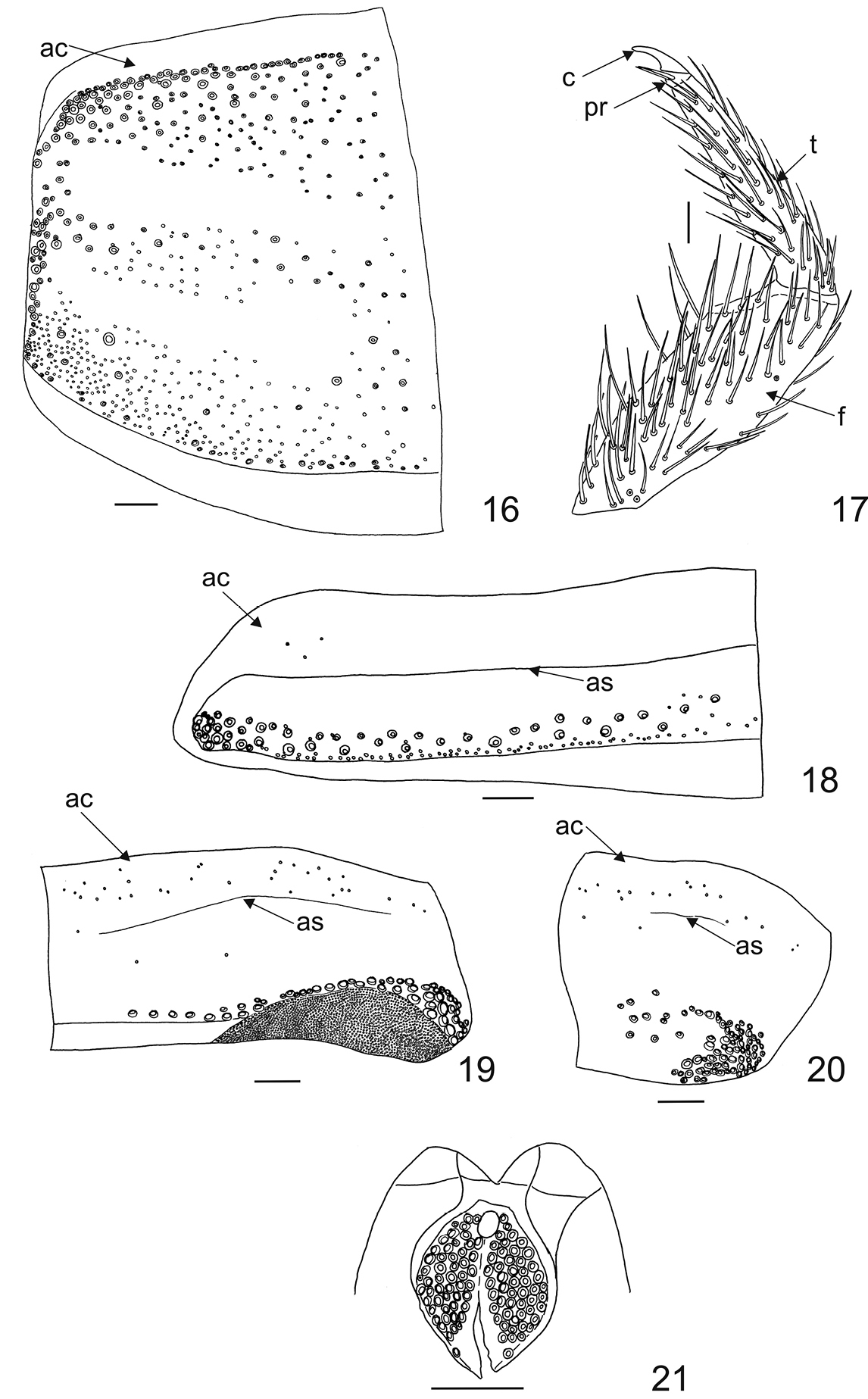
|
||
|
Mature larva of Ctesias (s. str.) serra (Fabricius, 1792). 16 Pronotum (dorsal, left half, denuded; large circles represent points of insertion of large spicisetae, small circles along the suture represent points of insertion of hastisetae) 17 Right protosternal leg (dorsal) 18 Abdominal tergum I (dorsal, left half, denuded; large circles represent points of insertion of large spicisetae, small circles represent points of insertion of hastisetae) 19 Abdominal tergum VII (dorsal, right half, denuded; large circles represent points of insertion of large spicisetae, small circles along the suture represent points of insertion of short setae, small circles below large circles represents points of insertions of hastisetae) 20 Abdominal tergum VIII (dorsal, right half, denuded; large circles represent points of insertion of large spicisetae, small circles along the suture represent points of insertion of short setae) 21 Abdominal tergum IX (dorsal, denuded; circles represent points of insertion of large spicisetae). Scale bars: 0.1 mm. |